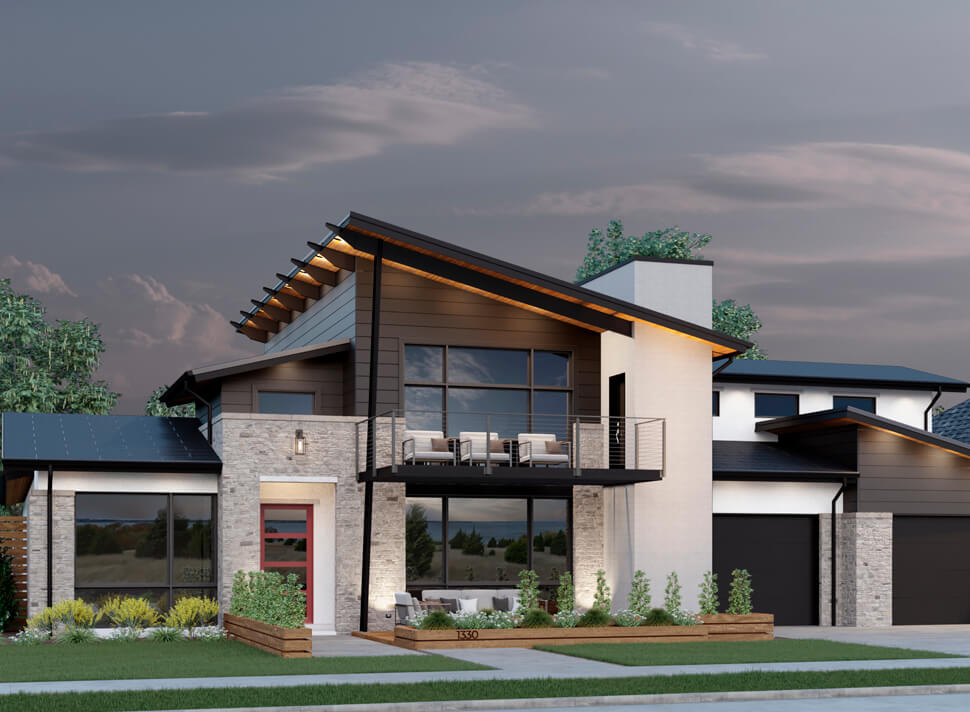Captivating Clients with 3D Exterior Renderings: Transforming Real Estate Marketing
The Revolution of Visual Storytelling in Real Estate
In the fast-paced world of real estate, where first impressions can make or break a sale, 3D exterior renderings have emerged as a game-changing tool. Gone are the days when potential buyers had to rely solely on their imagination or crude sketches to envision a property's potential. Today, the real estate industry is witnessing a paradigm shift, with 3D exterior renderings taking center stage in marketing strategies.
The impact of this visual revolution is staggering. According to a recent National Association of Realtors survey, 87% of home buyers found detailed property images to be the most helpful feature on real estate websites. More importantly, properties showcased with 3D renderings sold 32% faster and at an average of 9% higher prices than those without. These statistics underscore the transformative power of 3D exterior renderings in captivating clients and driving sales.
But what exactly makes 3D exterior renderings so compelling? It's not just about creating pretty pictures; it's about crafting immersive experiences that resonate with potential buyers on an emotional level. These renderings allow clients to visualize themselves living in the space, sparking a connection beyond mere square footage and amenities.
The Art and Science of 3D Exterior Renderings
Creating captivating 3D exterior renderings is a delicate balance of artistry and technical prowess. It's not just about replicating reality; it's about enhancing it and showcasing the property in its best light while maintaining credibility and accuracy.
The process begins with gathering detailed information about the property, including architectural plans, site surveys, and environmental data. This forms the foundation upon which the 3D model is built. Skilled 3D artists then meticulously craft every element of the exterior, from the texture of the bricks to the play of light on the windows.

Image from Yousee Studio
But the true magic lies in the details. A Journal of Architectural Visualization study found that renderings incorporating subtle environmental elements, such as realistic landscaping and atmospheric conditions, increased viewer engagement by 47%. This attention to detail can distinguish between a rendering that feels sterile and one that feels alive.
Color psychology plays a crucial role in this process. Research has shown that certain color schemes can evoke specific emotions and associations. For instance, warm earth tones can create a sense of comfort and stability, while cool blues and greys can convey a modern, sophisticated atmosphere. Savvy real estate marketers leverage this knowledge to tailor renderings to their target demographic, resulting in a 23% increase in initial inquiries.
Lighting is another critical factor in creating compelling 3D exterior renderings. The proper lighting can transform a mundane facade into a captivating spectacle. Many rendering artists employ advanced global illumination techniques to simulate the interplay of natural and artificial light, creating scenes that are not just visually appealing but also emotionally resonant.
Pushing the Boundaries: Interactive and Immersive Experiences
While static 3D renderings have revolutionized real estate marketing, the industry is already pushing into new frontiers. Interactive 3D renderings are gaining traction, allowing potential buyers to explore properties from different angles and make real-time modifications.
One pioneering firm in New York has reported a 78% increase in client engagement after implementing interactive 3D renderings on their website. These renderings allow users to change exterior finishes, landscaping elements, and even the time of day, providing unprecedented customization and engagement.
Virtual Reality (VR) and Augmented Reality (AR) are taking this concept further. By donning a VR headset, clients can take virtual tours of properties that have yet to break ground. This technology has proven particularly effective for off-plan sales, with developers reporting up to 40% higher conversion rates than traditional marketing methods.
The Data-Driven Approach to 3D Renderings
In the age of big data, 3D exterior renderings are becoming increasingly sophisticated and targeted. Advanced analytics are being used to tailor renderings to specific buyer personas, increasing their effectiveness and ROI.
For example, a luxury real estate firm in Miami utilized AI-powered analytics to create personalized 3D renderings based on potential buyers' online behavior and preferences. The result? A staggering 62% increase in qualified leads and a 28% reduction in the average sales cycle.
This data-driven approach extends to the rendering process itself. Machine learning algorithms are being employed to optimize rendering times and quality, allowing for faster iterations and more refined final products. One software company claims their AI-assisted rendering engine can reduce production time by up to 40% while improving overall quality by 25%.
The Ethical Considerations of Hyper-Realistic Renderings
As 3D exterior renderings become increasingly realistic, they raise important ethical questions about representation and expectation management. There's a fine line between showcasing a property's potential and creating unrealistic expectations.
A survey of real estate professionals found that 68% believe there should be industry standards for 3D renderings to ensure they accurately represent the final product. Some firms have taken proactive steps, implementing "reality checks" to compare completed properties to their pre-construction renderings, ensuring accountability and building client trust.
This commitment to authenticity is not just ethical; it's good business. Properties marketed with accurate 3D renderings had 17% fewer post-sale disputes than those with more idealized imagery.
The Economic Impact of 3D Rendering Technology
The rise of 3D exterior renderings has profoundly impacted the real estate industry's economics. On average, properties marketed with high-quality 3D renderings sell for 7.2% more than comparable properties without such visualizations.

Image from Yousee Studio
But the benefits extend beyond individual sales. The efficiency gains provided by 3D renderings are reshaping the industry's workflow. Architects report a 35% reduction in client revision requests when using interactive 3D models during the design phase. This streamlined process translates to significant time and cost savings across the board.
Moreover, the 3D rendering industry itself has become a significant economic force. The global 3D rendering market is projected to reach $6.87 billion by 2025, growing at a CAGR of 22.4%. This growth creates new job opportunities and drives innovation in related fields such as computer graphics and virtual reality.
Conclusion: The Future is Visual
As we look to the future, it's clear that 3D exterior renderings will continue to play a pivotal role in real estate marketing. The technology is evolving rapidly, with advancements in real-time rendering, AI-assisted design, and immersive technologies promising even more captivating experiences for potential buyers.
The real estate professionals who embrace this visual revolution will be well-positioned to thrive in an increasingly competitive market. By harnessing the power of 3D exterior renderings, they can create emotional connections with clients, streamline the sales process, and ultimately transform how properties are marketed and sold.
In a world where attention is the most precious commodity, 3D exterior renderings offer a powerful tool to capture imaginations and turn property dreams into reality. As the lines between the digital and physical worlds continue to blur, one thing remains clear: in real estate marketing, a picture isn't just worth a thousand words – it's worth millions in potential sales.
Contact us at YouSee Studio for captivating 3D renderings and immersive virtual experiences.
Karen Spacey is a content writer and the author of this article.










